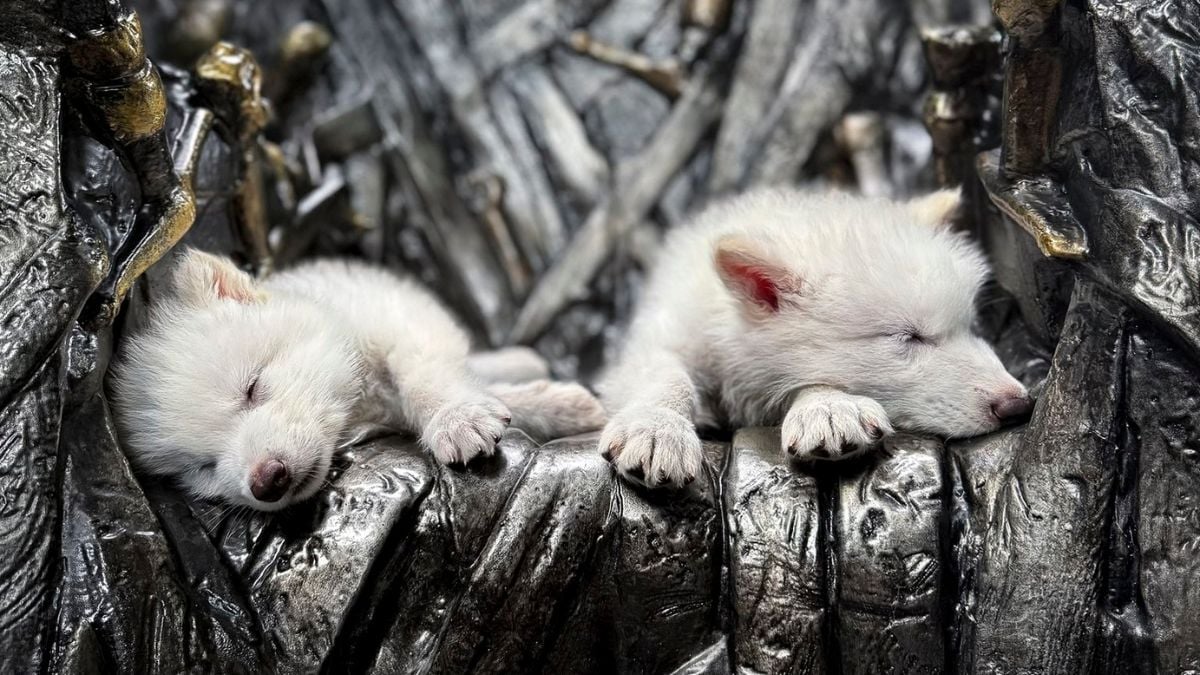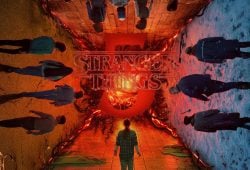
Although its name sounds like something out of a fantasy novel, the dire wolf (Aenocyon dirus) was a real predator that lived in North and South America during the Pleistocene Epoch, between 2.5 and 3.5 million years ago. It went extinct about 10,000 years ago after the last Ice Age, but thanks to the biotechnology company Colossal Biosciences, this animal has now been “revived” using cutting-edge genetic technology. The achievement has captured global attention, not only for its unprecedented scientific significance but also for the dire wolf’s role in popular culture.
The dire wolf is widely recognized as the inspiration for the “dire wolf” in Game of Thrones, the emblem of House Stark and a mythical creature associated with strength, loyalty, and survival. Now, that literary and television symbol has come to life in the form of three genetically engineered puppies: Romulus, Remus, and Khaleesi.
How were dire wolves brought back to life?
Colossal Biosciences officially announced on April 7, 2025, that it had successfully birthed three canines with physical traits resembling those of the Aenocyon dirus, using DNA extracted from ancient fossils—a 13,000-year-old tooth found in Ohio and a 72,000-year-old skull fragment recovered in Idaho.
ALSO READ: The White Lotus 4: Which characters will return and where will the series be filmed?
This genetic data was edited and merged into the stem cells of modern gray wolves through 20 genetic modifications, targeting physical traits such as body size, coat thickness, and jaw strength. Embryos were then implanted into domestic dogs that served as surrogate mothers. From this process, Romulus and Remus were born in October 2024, followed later by Khaleesi, a female pup.
According to Beth Shapiro, Colossal’s chief scientist, “We rewrote 14 key genes in the nucleus to express 20 characteristics believed to define the dire wolf phenotype.” The technique used was less invasive than traditional cloning.
SOUND ON. You’re hearing the first howl of a dire wolf in over 10,000 years. Meet Romulus and Remus—the world’s first de-extinct animals, born on October 1, 2024.
The dire wolf has been extinct for over 10,000 years. These two wolves were brought back from extinction using… pic.twitter.com/wY4rdOVFRH
— Colossal Biosciences® (@colossal) April 7, 2025
How big are the revived dire wolves?
One of the most common questions is: How big are the revived dire wolves? Currently, the puppies weigh about 36 kilograms (80 pounds), but Colossal’s experts estimate that, as adults, they will reach between 59 and 68 kilograms (130–150 pounds). That makes them up to 25% larger than the average gray wolf, which typically weighs between 36 and 45 kg (80–100 pounds).
The original dire wolf, however, could weigh as much as 100 kg (220 pounds) at its most robust. It had shorter legs, a muscular frame, and powerful jaws adapted to crush bones. Its ecological niche was similar to that of a hyena—both scavenger and predator—hunting in coordinated packs.
We’re Colossal Biosciences, the de-extinction company responsible for bringing back the first animals from extinction. Our dire wolf pups, Romulus and Remus, were born on October 1, 2024. Watch these pups grow up on our YouTube channel. Link in bio.
These two wolves were… pic.twitter.com/hbk1wFQ3lf
— Colossal Biosciences® (@colossal) April 7, 2025
Where do Romulus, Remus, and Khaleesi live now?
Today, the three genetically modified wolves reside in an eco-reserve certified by the American Humane Society, at an undisclosed location. The area spans over 800 hectares and is equipped with drone surveillance, live-stream cameras, and a dedicated staff to ensure the animals’ welfare.
Their diet, socialization, and surroundings are carefully monitored. One of the major concerns is that, unlike their extinct ancestors, these wolves have not learned natural hunting skills. As Matt James, Colossal’s head of animal welfare, explained: “They’ll probably never learn how to bring down a giant elk or a big deer, because they won’t have the opportunity to observe and learn from wild parents.”
Are these wolves truly dire wolves?
This is where science and ethics intersect. While these wolves resemble the Aenocyon dirus, they are not exact clones. According to Colossal, none of the three animals share complete genetic material with the extinct dire wolf. External experts agree that this can’t be considered a true “resurrection.”
“All we can do now is create something that superficially resembles something else,” said Vincent Lynch, an evolutionary biologist at the University of Buffalo. However, Colossal’s scientists see this as a technical milestone that paves the way for future de-extinction projects, such as reviving the woolly mammoth, the Tasmanian tiger, or the dodo.
What role does pop culture play in this project?
The dire wolf’s story can’t be separated from its impact on geek culture. George R.R. Martin, author of A Song of Ice and Fire and creator of the dire wolves in Game of Thrones, participated in the project as a cultural advisor and even visited the puppies. “Many people view dire wolves as mythological creatures that only exist in fantasy worlds, but in reality, they have a rich history of contributing to the American ecosystem,” Martin stated.
The project’s public unveiling included a collaboration with filmmaker Peter Jackson, who provided the original Iron Throne prop from the series for a photo shoot featuring Romulus and Remus in Dallas, Texas.
What is the future of dire wolves?
Despite ethical concerns and scientific limitations, Colossal Biosciences states that its long-term goal is to reestablish the dire wolf as a viable species in protected habitats on Indigenous lands in North America. Co-founder Ben Lamm said, “This major milestone is the first of many examples proving that our de-extinction technology platform works.”
More than just a nod to fantasy fiction, the revived dire wolves represent a bold step in genetic engineering—ushering in a future where science doesn’t just study the past but begins to literally rewrite it.









